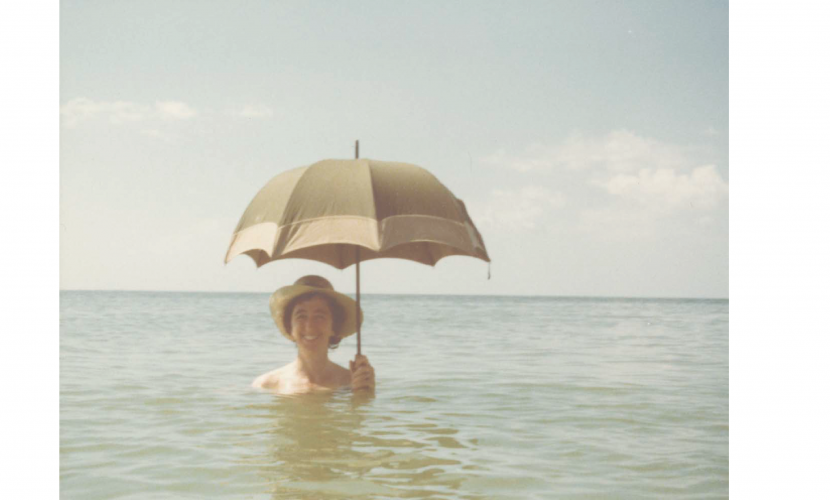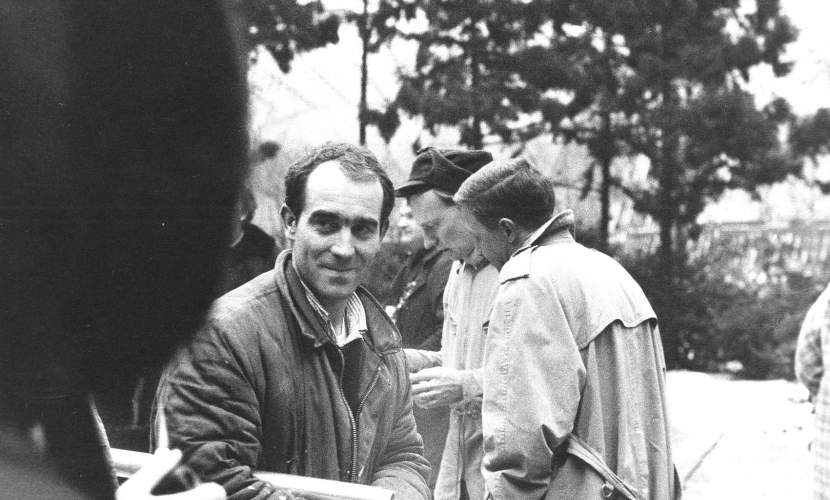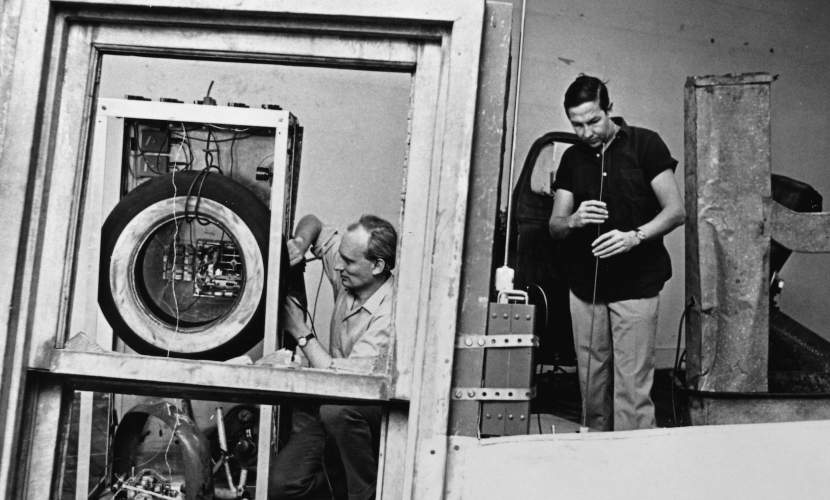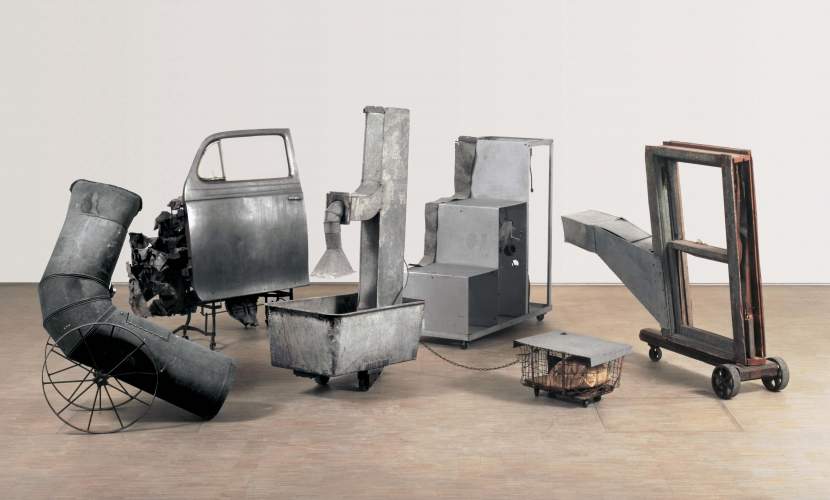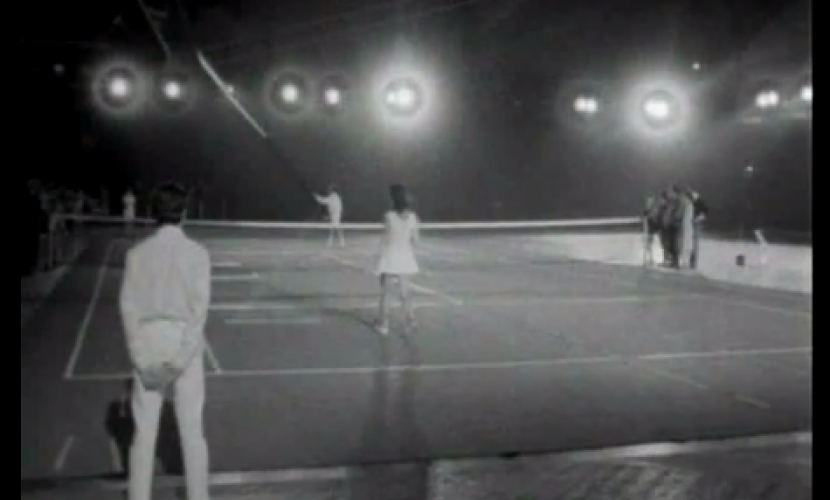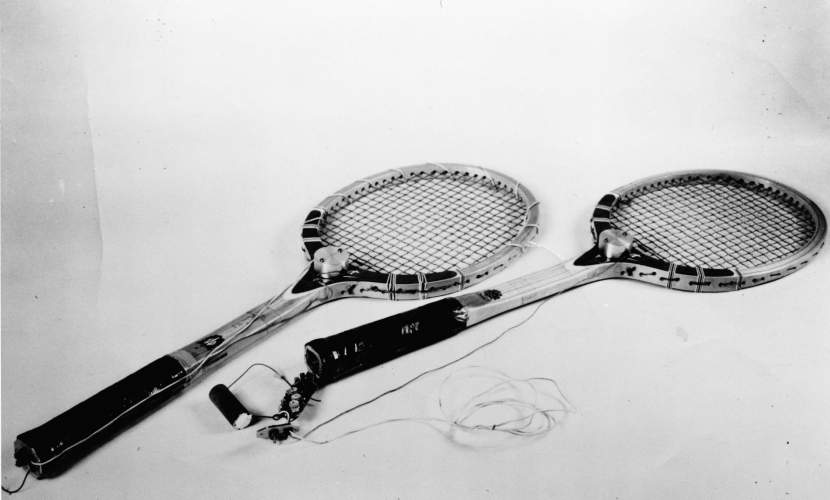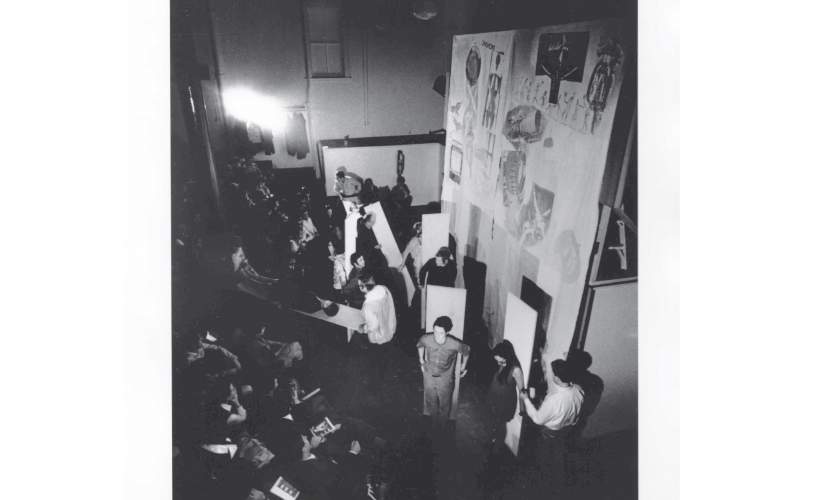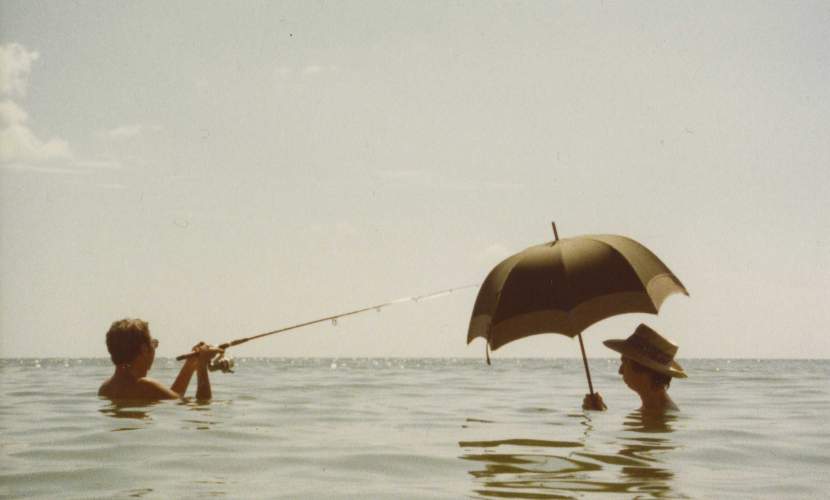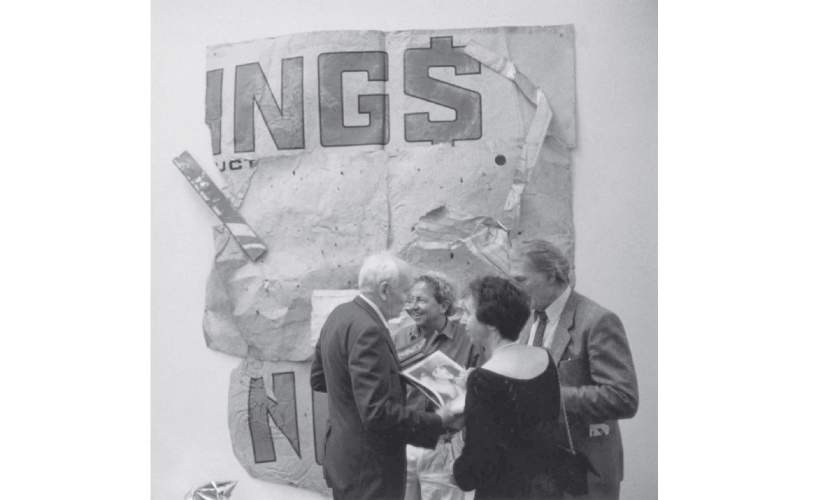Julie Martin
Julie Martin is director of Experiments in Art and Technology (E.A.T.), the nonprofit organization cofounded in 1966 in New York by artists Rauschenberg and Robert Whitman and engineers Billy Klüver (Martin’s late husband) and Fred Waldhauer to encourage and facilitate collaborations between artists and engineers. Martin joined the E.A.T. staff in 1967.
With Klüver and art historian Barbara Rose, Martin coedited the book Pavilion (E. P. Dutton, 1972) that documents the Pepsi Pavilion, which was designed and built by E.A.T. for Expo ’70 in Osaka. Martin collaborated with Klüver on numerous articles on art and technology, including “Working with Rauschenberg,” for the exhibition catalogue published on the occasion of Rauschenberg’s 1997 retrospective at the Solomon R. Guggenheim Museum, New York. She is currently editing a collection of Klüver’s writings.
Martin is coexecutive producer of a series of films, begun in 1995, which document the artists’ performances in 9 Evenings: Theatre & Engineering at the 69th Regiment Armory, New York, in October 1966. She is also the coordinating producer of Whitman’s recent theater performances Swim (2015), Local Report (2012 and 2005), Passport (2011), and MoonRain (2010).
Born in Nashville, Martin graduated from Radcliffe College with a degree in philosophy and from Columbia University with a master’s degree in Russian studies.
Excerpt from interview with Julie Martin by Brent Edwards, 2013
Martin: When [Billy Klüver] began to work with artists, I think he saw that, a-ha, the way the artist works—not the art but the way the artist works—and the kind of attitudes the artist has toward what he or she does excited him. He saw the artist as being a kind of conduit to get the engineer involved in new ideas and new possibilities. And then as he began to work with Bob, he realized the possibilities of collaboration. He said very much that he went from this idea of the engineer offering something to the artist—the idea that the two would collaborate, one-to-one, two professionals. Two people in different fields but collaborating on something where the outcome might be different from what they started with. I mean, it always started from the artist, obviously. The artist had an idea. Bob’s idea to do a sound piece with certain parameters. But the engineer’s contribution from his own profession, and having him think outside what he normally did every day, could invigorate him in his own profession. But the idea was the collaboration. I remember hearing it when I first got involved. This word was very strange to me because at that point, the only collaboration you knew about was like World War II and it was a negative word. You know, collaborating with the Nazis, for example, in France. It was interesting that this must’ve been a really new concept because even the word was something that—as far as I knew, at least—wasn’t in common parlance. So I think the beginning of this whole idea of collaboration started with Bob and Billy and was very much influenced by Bob’s attitude toward the way he worked.
Edwards: In terms of that invigorating effect—that impact on the engineer—do you think for Billy it was more a matter of being exposed to the process? Seeing the way the artist works? Where it’s not about the kind of corporate demands of Bell but it’s a different kind of process where it’s still problem-solving but you’re solving a different kind of problem. Or was it about the collaboration, people in different fields working together? And that has an impact on you because you think about what you do as an engineer in a different way. Or was it about the mindset? Was it more about the art that’s emerging from this stuff is changing the way the engineer potentially sees the world? Because it’s interactive art: you’re speaking into it, you’re hearing it, you’re walking through it. Do you see what I mean? Which—or is it all of those?
Martin: Well, I was about to say all of the above, but not the third one. First, I think the process—just being involved in working with an artist and working outside the lab, working in kind of a dirty situation as opposed to, say, the clean, well-organized lab, would have the engineer use his skills differently. But I think Billy felt certain things about the artist, the way the artist works. First, taking full responsibility for the work. In other words, an artist doesn’t make any excuses for what he or she shows. “Oh, I would have done it better if— If my boss had given me more time—” So this idea of responsibility, commitment. You’re committed to a project, you’re committed to a process. These are the kinds of things that the artist had. The sense of scale—human scale. And focus on the individual. Billy thought it was an important thing that the artist was sensitive to. The economy of means that the artist works with. There are no superfluous elements in a work of art. I mean, the painting or the sculpture, it’s what has to be there—what he or she wants to be there. There’s nothing superfluous or decorative, necessarily.
So it was, I think, the process and certain aspects of the way the artist works and the artist’s concerns that Billy thought could inspire engineers to think differently, to think more about the individual, think about things that suited the individual more. The art—there’s no sense that you had to understand the art. I mean, you were an engineer and this was an artist and these were two professionals who could come together solving a problem, working on a project.

